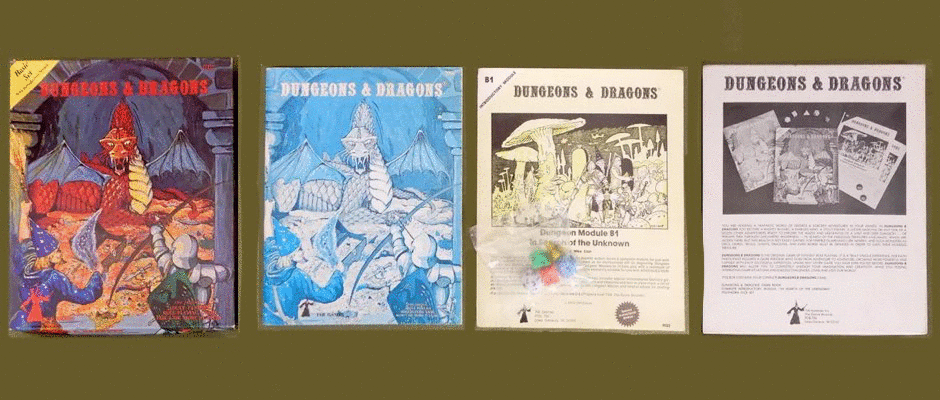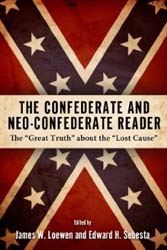I finally finished a book on my iPad! Thus this review will be in two parts. The first will cover this collection’s content co-edited by a name I trust with History, Dr. James W. Loewen of Lies My Teacher Told Me fame. The second will be my reading experience through the Kindle software for iPad.
This year is the Sesquicentennial of the American Civil War’s beginning. Most experts agree that the Confederate attack against Fort Sumter (April 12, 1861) was the “opening kick off” to the nation’s most devastating war; 600,000-plus died (50 percent more than WWII). But shortly after Johnston surrendered to Sherman, the never-ending Neo-Confederate campaign to re-write the war’s origins, outcomes and events got underway. As a Yankee (by birth and conviction), I have grown tired of their revisionism, especially when they start talking shit about Abraham Lincoln, wearing sic semper tyrannus T-shirts and brandishing the “Confederate” flag which was the battle flag for the Army of North Virginia, the real one caused confusion for both armies. The current myth du jour making the rounds now is the Confederate Army having hundreds to thousands of Black soldiers. I guess this lie is more palatable than the fallacious “Heritage Not Hate” campaign.
Not only did the South lose, they were on the wrong side of History from the beginning. It can be very hard to find such a perspective amongst the American people today thanks to the Neo-Confederates and their allies: modern Republicans, Dixiecrats, most Libertarians and Fundamentalist Christians. For generations they’ve been “working the refs” (nod to Eric Alterman) to whitewash the sick socio-economic regime. Sadly, they’ve been winning. On Lincoln’s 200th birthday, I heard many of the Neo-Confederate talking points being re-hashed from some reasonably educated and intelligent people. Having spent part of my childhood in Springfield, IL (1979-82); it turned my stomach listening to these Neo-Confederate dupes.
There is hope through this compilation. Loewen and Sebesta provide the best rebuttal to combat the falsehoods, key excerpts of the South’s own words before, during and after the Civil War. They preface the collection with a little quiz Loewen gave to history buffs in North Carolina and college students in Minnesota; something similar to what he did earlier in the Washington Post this year. The primary question he asked was why did the South secede? There are four commonly agreed upon answers: slavery; states’ rights; tariffs and taxes; and Lincoln’s election. Both audiences’ majorities voted for states’ rights (around 50 percent) which is dead wrong; misinformation isn’t a regional problem. Only a quarter chose slavery, the actual reason and this is verified throughout the first three chapters.
I myself have been guilty on swallowing some of the errors too. How? When I was a kid in the Seventies, I thought and believed the war was over slavery, it’s what the teachers and textbooks said. As I grew older, “slavery” seemed too simplistic. Why? In high school and college I learned more about the conflict’s nuances so my wrong answer was more of a cop out…several things caused, slavery was just one factor. The other influence to my stock answer would be my encounters with other White Northerners whose attitudes towards Blacks were equally racist, especially when they were from cities: Chicago, Milwaukee, St. Louis, Philadelphia, Peoria and Springfield. If these fellow Yankees thought Blacks were lazy, dumb, violent, promiscuous and/or dishonest, I really doubt their ancestors fought the Confederacy to liberate a group they considered inferior.
My overall opinion never changed though: the North under Lincoln did the right thing because the South wanted to perpetuate an unrealistic civilization by any means necessary. (They even wanted to expand slavery to Latin America and the Caribbean by having America’s military conquer those neighbors.) Southerners often conveniently forget they attacked the Union first and left Lincoln no other option but to respond in kind with force. I would like to hope we’ve advanced since then…all signs point toward “not really.”
The book is divided into these sections:
- Pre-Civil War 1787-1860
- Secession 1860
- Civil War 1861-65
- Reconstruction 1866-90
- The Nadir 1890-1940
- Civil Rights 1940-Present
Every period and most pieces are introduced by the editors with some vital context: what’s the state of the nation; who are these authors/speakers; so on. I always wondered what the aberration between Reconstruction and Civil Rights was called, The Nadir is very fitting. Many school textbooks never reconcile this ugly period in American history. They make the Civil Rights movement after WWII seem like something suddenly spontaneous.
Reading about the police state the Confederacy ran was worth the price tag on this book alone. Lincoln’s critics constantly bring up how he suspended habeas corpus and exceeded his Constitutional war-time authority. Lincoln is guilty on all charges but he did them out of necessity and desperation. He was still wrong for doing them in my opinion so it does stain his legacy. However, the Confederacy was more autocratic under Davis: the government owned key industries (Gasp! Socialism in Dixie!); prices were regulated; passes were required for rail travel; people were frequently arrested and sometimes executed for any Union sympathies; martial law was imposed on multiple Southern cities; and the Confederate Army had a more far-reaching draft than the Union. Here’s a fun fact to turn the states’ rights argument on its head; Davis frequently complained about the lack of cooperation he received as states exercised their individual powers against the wishes of the larger body. Nice to see it haunt the Confederacy since they were originally against this legal argument. It was also a contributing factor to them losing the war as states held back some manpower to prevent slave uprisings.
Many excerpts can be a chore to read unless you’re into the verbose 19th Century style. They still drive the point home on what motivated the secession before the war, slavery. There’s nothing regarding tariffs or Federal overreach. With the latter, the South complains more often about how weak the Federal government is on enforcing fugitive slave laws, opening the territories to slavery and arresting abolitionists for inflammatory activities.
Obviously the rhetoric changes during the Reconstruction and beyond because the South had come to accept (grudgingly) slavery as at least a distasteful matter. The White supremacist element remains thanks to it being a shared disease in the North: sundown towns, “understood” policies (what I call the Yankee segregation I saw in Milwaukee and Chicago bars) and economic infighting amongst the immigrant populations.
The scariest excerpt is dated 2003. It’s from some crank named Frank Conner claiming “how we got here.” Here being the usual claptrap of the South being under siege from Jews with their allies: Blacks and Liberals. He’s probably involved with the Teabaggers now since they share his ongoing distrust/paranoia.
Reader is mandatory for any Civil War buff’s collection. I think key sections should be given to high school students but I live in Texas so I know I will be overruled there; if it doesn’t promote blind patriotism, it’s considered wrong with the hyper-partisan SBOE. Lastly, I recommend it to my fellow Yankees. We have nothing to be ashamed of. We never did. The South’s lost cause is just their sick rationalization they need to get over.
Part Two: How was it on Kindle software via the iPad?
Overall, good but imperfect. Reading was better than I anticipated. Amazon makes claims about their hardware being superior due to the display emulating paper. My iPad’s LCD wasn’t any serious hindrance. I often liked having the portability and instantaneous the iPad provided when I felt like reading: during intermissions at Stars’ games, my lunch hour and before bed (my doctor says not to do this though, it puts your mind “on the hunt”). The downside was navigating. If I needed to scroll back to look up something for this review, it was just easier to start from the cover and use the Table of Contents’ links to jump to the chapters I wanted to re-read. A traditional book would’ve been more efficient. My biggest peeve was Kindle’s formatting. There weren’t any clear breaks to tell you when the editors were done commenting and the author/speaker began. I had to pay attention to the shift in language to know when it happened.
Will I continue reading via Kindle? Sure. I have several more books I received through a gift card and many are published through this over iBooks.

